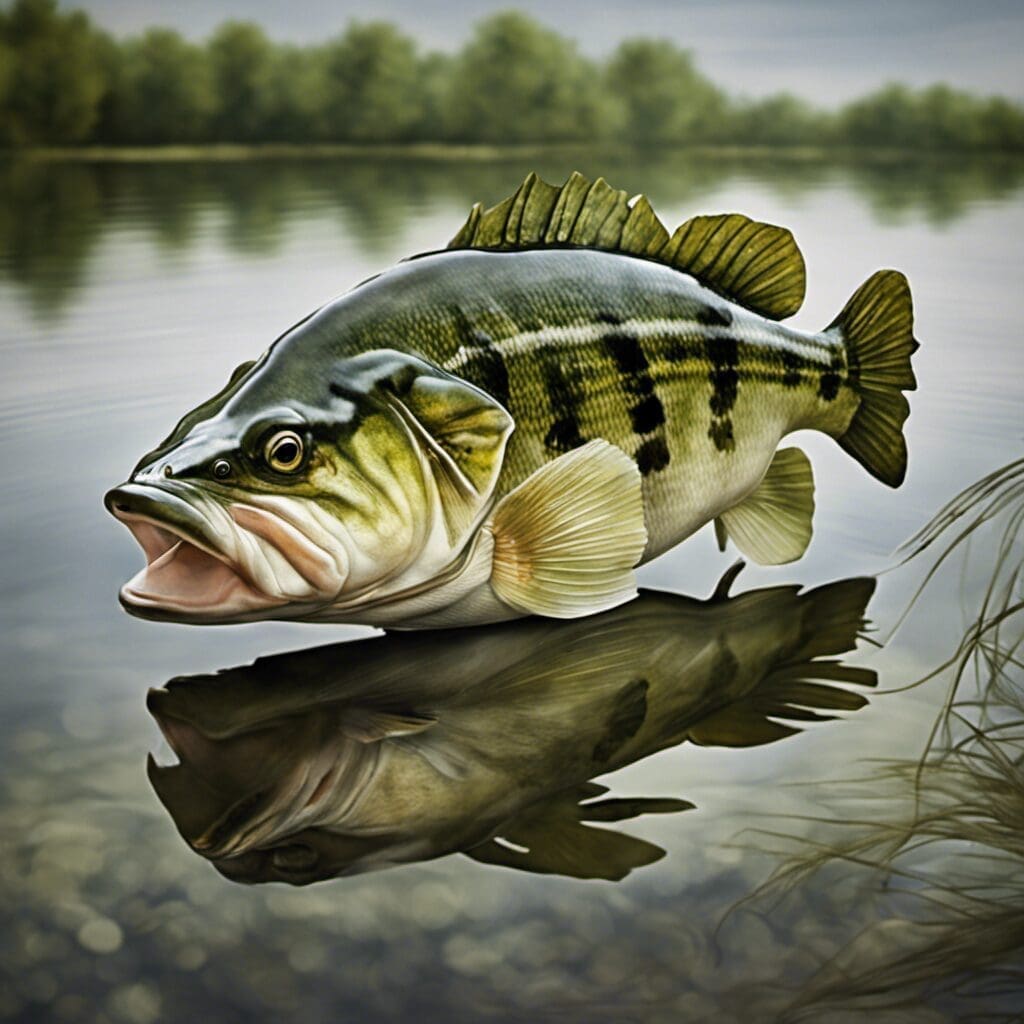Introduction
The Largemouth Bass, scientifically known as Micropterus salmoides, belongs to the Sunfish family (Centrarchidae). This species is renowned for its exciting fight and enormous mouth, which is prominently larger than the head. The Largemouth Bass is a favorite among many anglers, providing an exciting fishing adventure with its explosive hits and dramatic jumps.
Conservation Status
Largemouth Bass are classified as Least Concern under the International Union for Conservation of Nature (IUCN). This is due to their wide distribution and large populations. However, conservation efforts, such as regulated fishing and habitat preservation, are still vital to ensure this species’ growth and survival.
Statistics
| Attribute | Average | Range |
|---|---|---|
| Length | 20 inches | 12 – 30 inches |
| Weight | 10 lbs | 2 – 20 lbs |
| Life Span | 16 years |
Distribution
This species is native to North America, primarily found in the United States, Canada, and Northern Mexico. Their range extends from southern Canada to northern Mexico. In terms of migration patterns, Largemouth Bass are known to migrate within bodies of water, typically moving deeper in the water column during colder months.
Habitats
Largemouth Bass prefer warm, slow moving waters including rivers, lakes, ponds and reservoirs. They are most commonly found near aquatic vegetation where they can easily ambush prey. The ideal depth range is about 20 feet while the optimal water temperatures range from about 65 to 85 degrees Fahrenheit.
When and Where to See
The best time to see Largemouth Bass is during their spawning season, which typically occurs in spring when water temperatures reach 60 to 70 degrees Fahrenheit. The best time of day would be in the early morning or late evening when they are most active.
Best Fishing Locations
Here are some of the best places in North America to find Largemouth Bass:
- Lake Guntersville, Alabama
- Lake Toho, Florida
- Santee Cooper Lakes, South Carolina
- Lake Fork, Texas
- Kentucky Lake, Kentucky/Tennessee
Tip: Look for Largemouth Bass near structures such as rocks, wood, boat docks, vegetation or drop-offs where they often hide to ambush prey.
How to Catch
Largemouth Bass are known to strike a variety of baits and lures including plastic worms, jigs, crankbaits, and spinnerbaits. Fishing techniques such as casting, fly fishing and trolling are effective. The best time to fish for this species is early morning or late evening.
Identification Guide
Largemouth Bass have a distinctive large mouth, with the upper jaw extending past the back of the eye when the mouth is closed. They have a greenish to brownish body with a darker lateral line stripe and a white underbelly.
Culinary
Largemouth Bass have a mild, sweet flavor with a firm texture. The fish can be fried, baked, or grilled. Nutritional information reveals that the Largemouth Bass is high in protein and low in saturated fat, making it a healthy food option.
Additional Information
Feeding habits: The Largemouth Bass is a carnivorous predator and mainly feeds on small fish, crayfish and insects.
Predators and threats: Predators include larger fish, turtles, snakes, alligators, birds of prey. Human-induced threats include habitat modification and pollution.
Cultural/ Historical Significance: The Largemouth Bass is designated as the state fish or freshwater fish in six U.S. states.
References and Further Reading
Information has been compiled from credible sources such as United States Geological Survey (USGS), FishBase and Encyclopedia Britannica. Further reading can also include “Largemouth Bass: An In-Fisherman Handbook of Strategies

